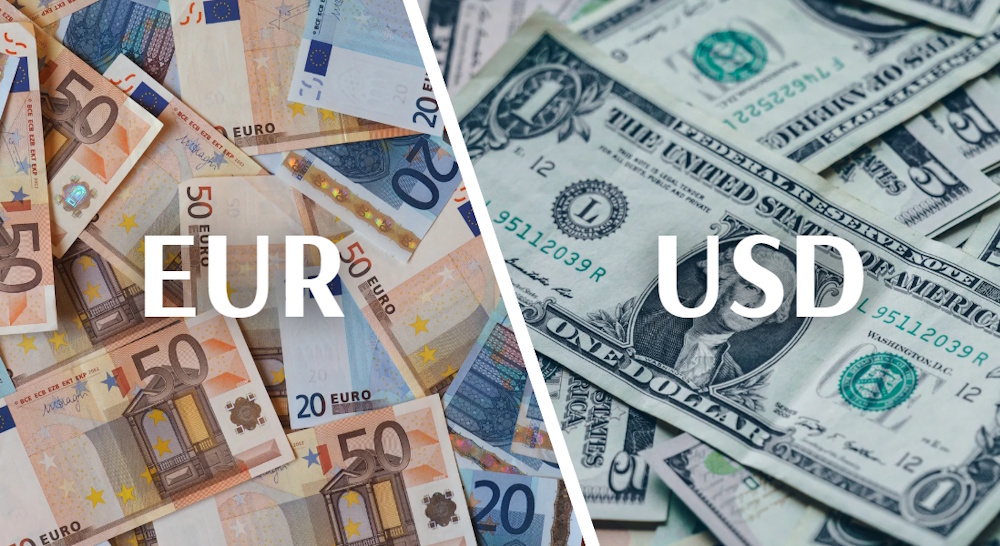The EUR/USD pair is exhibiting upward momentum, currently positioned near 1.1650, marking its peak in a week, as market participants weigh the optimism surrounding U.S.–China trade developments against the anticipation of a Federal Reserve rate cut. The pair’s ascent is a result of a consistent five-day rally from 1.1580 lows, indicating an increased risk appetite and renewed pressure on the U.S. dollar following President Donald Trump’s remarks expressing optimism about achieving a trade agreement with Chinese President Xi Jinping later this week. The euro demonstrates resilience against the dollar, even in light of weaker economic data from Europe, underscoring the influence of geopolitical sentiment over immediate fundamentals. The Federal Reserve’s policy announcement is the primary focus for the market, as traders are currently pricing in a 98% likelihood of a 25-basis-point rate cut, which would adjust the federal funds rate to a range of 3.75%–4.00%. The reduction is anticipated following subdued inflation indicators and increasing evidence of labor market exhaustion. However, stakeholders are closely monitoring Chair Jerome Powell’s forward guidance regarding the likelihood of another cut in December. Any indication of continued easing could lead to further depreciation of the U.S. dollar, allowing EUR/USD to test the next significant resistance levels at 1.1670, 1.1730, and 1.1780. On the downside, robust supports are positioned at 1.1620, 1.1575, and 1.1545, where it is anticipated that buyers will safeguard the lower boundary of the pair’s recent consolidation zone.
President Trump’s Asian tour has emerged as a significant driver of global market sentiment. The arrangement with Japanese Prime Minister Sanae Takaichi to ensure rare-earth mineral supply chains, along with his comments that the meeting with Xi Jinping “will work out well,” have prompted investors to shift their focus from safe havens. Treasury Secretary Scott Bessent has confirmed the withdrawal of the 100% tariff threat on Chinese imports. In a reciprocal move, Beijing has agreed to postpone rare earth export restrictions, which offers immediate relief to the markets. With an increase in risk appetite, the demand for the dollar as a safe haven has lessened, enabling EUR/USD to rise consistently despite the ongoing softness in eurozone data. Recent eurozone releases have been disappointing; however, the single currency persists in drawing inflows as traders prepare for possible dollar weakness. The German GfK Consumer Confidence Index has decreased to -24.1 in November, down from -22.3 in September. This marks its lowest level in seven months and falls significantly short of the anticipated -22.0. Meanwhile, the ECB’s consumer inflation expectations survey indicated a minor decline to 2.7% for the upcoming 12 months, while the three- and five-year expectations remained stable at 2.5% and 2.2%, respectively. In light of these declines, the euro continues to find support from the expectation that the ECB will maintain steady rates, whereas the Fed is in a phase of easing. The contraction of interest rate differentials between the eurozone and the U.S. has emerged as a key factor influencing the recent recovery of EUR/USD over the past week.
From a technical perspective, EUR/USD continues to operate within a multi-month consolidation range, confined between 1.1550 and 1.1750. The recent advance above the 9-day EMA (1.1630) indicates a short-term bullish trend; however, a close above 1.1670 is necessary to validate a breakout. The Relative Strength Index on the 4-hour chart is positioned just above 50, indicating a slight bullish momentum. Meanwhile, the Moving Average Convergence Divergence histogram displays narrowing green bars, suggesting that while upward movement is present, it remains cautious yet intact. A sustained break above 1.1730 may pave the way toward 1.1780, which is the high from October 1. Conversely, a failure to maintain 1.1620 could lead to a retracement toward 1.1575. The U.S. Dollar Index is currently positioned around 98.65, facing challenges in maintaining its position above the 99.14 resistance level as market participants anticipate the Federal Reserve’s policy decision.
The index has fallen below its short-term ascending trendline and is currently examining the confluence zone of the 50-day EMA (98.82) and 200-day EMA (98.45) — a crucial support band that frequently influences directional bias. Momentum indicators indicate a declining trend, with the RSI at 36, signaling diminishing bullish strength in the dollar. This technical setup enhances the euro’s potential for advancement, given the greenback’s ongoing struggle to maintain strength, which continues to promote bullish positioning in EUR/USD as we approach the Fed decision. The focus of the market will promptly transition to the upcoming European Central Bank meeting in the wake of the Fed’s announcement. The ECB is anticipated to maintain rates at their current level, with President Christine Lagarde expected to emphasize a prudent approach in light of declining demand across Europe. However, as U.S. monetary policy becomes more accommodative, the interest rate spread between the two regions is decreasing. This convergence has traditionally provided an advantage to the euro, particularly during periods of enhanced global growth expectations. Should the Fed indicate additional cuts while the ECB maintains its current stance, the EUR/USD pair may continue to exhibit an upward trend and could possibly revisit the 1.18 level in the near term.

